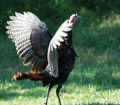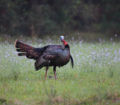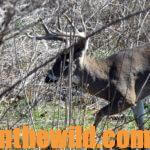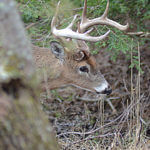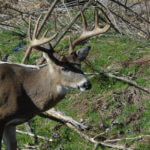Editor’s Note: Ernie Calandrelli just retired as the director of public relations and advertising for Quaker Boy Game Calls in Orchard Park (https://www.quakerboy.com), New York, and is an avid turkey hunter.
 Most turkey hunters prefer to hunt on days when there’s no wind, no rain and no noise. But any day you wear your camouflage, it will keep you from being seen. But those are also the days when turkeys seem to be able to hear you if you even scratch your head. More than likely, when you’re trying to call turkeys, you’ll have to move at some point. So, the first thing I do is clear the sticks and leaves away from my spot where I’m set-up. One of the best ways to do this without spooking a turkey is to use the same scratching technique turkey hens use when looking for acorns or fresh green sprouts. Use a cadence of scratch, scratch, pause and scratch. This way, you sound like a hen turkey that has flown down early and is looking for food. When you begin to call, you can sound like that same hen that’s been scratching in the leaves.
Most turkey hunters prefer to hunt on days when there’s no wind, no rain and no noise. But any day you wear your camouflage, it will keep you from being seen. But those are also the days when turkeys seem to be able to hear you if you even scratch your head. More than likely, when you’re trying to call turkeys, you’ll have to move at some point. So, the first thing I do is clear the sticks and leaves away from my spot where I’m set-up. One of the best ways to do this without spooking a turkey is to use the same scratching technique turkey hens use when looking for acorns or fresh green sprouts. Use a cadence of scratch, scratch, pause and scratch. This way, you sound like a hen turkey that has flown down early and is looking for food. When you begin to call, you can sound like that same hen that’s been scratching in the leaves.
In the process of clearing the leaves, make sure to keep piles of leaves on your left and your right to scratch-in a turkey. Often when a gobbler gets hung-up, it’s because he can’t see the hen that has been calling to him. Simply scratch in the leaves right beside you to make that gobbler believe a hen is there. If I can’t get a gobbler to come within gun range by using soft clucks and purrs on my Turkey  THUG calls, then I not only scratch in the leaves but lightly throw some leaves in the air. Many times if you give that gobbler a little extra confirmation that a hen’s working in the leaves, he’ll come in that extra 20 or 30 yards and present the shot.
THUG calls, then I not only scratch in the leaves but lightly throw some leaves in the air. Many times if you give that gobbler a little extra confirmation that a hen’s working in the leaves, he’ll come in that extra 20 or 30 yards and present the shot.
On many calm days, when the turkeys aren’t gobbling very much, you may have a bird sneak-up on you. You won’t have heard or seen him, but suddenly he’s standing 10-yards away, looking at you. You’ll have your gun in your lap and be praying your camouflage is working. If you’re thinking about trying to fast-draw and shoot that turkey before he gets away from you, it won’t work. But if you stay still, that turkey often will walk on past you. Then when he has his back to you, you may be able to give him a little cluck or a little purr. He’ll blow-up, go into full strut and turn his tail toward you. If he does, since the gobbler’s head is below his fanned tail, you can bring your gun up. When he drops his strut, you can shoot.
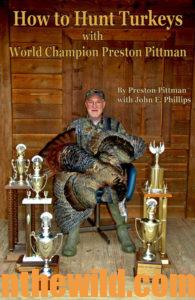 To learn more about turkey hunting, check out John E. Phillips’s book, “How to Hunt Turkeys with World Champion Preston Pittman,” available in Kindle and print at http://amzn.to/144Irn5 and from Audible at https://www.audible.com/pd/B01N39E8NT/?source_code=AUDFPWS0223189MWT-BK-ACX0-079067. To get a free eBook, “The Turkey Gobbler Getter Manual,” go to https://www.dropbox.com/sh/ps7hp9vdlek764m/AACP4EjpWIPxf8azkeWajvsMa?dl=0.
To learn more about turkey hunting, check out John E. Phillips’s book, “How to Hunt Turkeys with World Champion Preston Pittman,” available in Kindle and print at http://amzn.to/144Irn5 and from Audible at https://www.audible.com/pd/B01N39E8NT/?source_code=AUDFPWS0223189MWT-BK-ACX0-079067. To get a free eBook, “The Turkey Gobbler Getter Manual,” go to https://www.dropbox.com/sh/ps7hp9vdlek764m/AACP4EjpWIPxf8azkeWajvsMa?dl=0.

